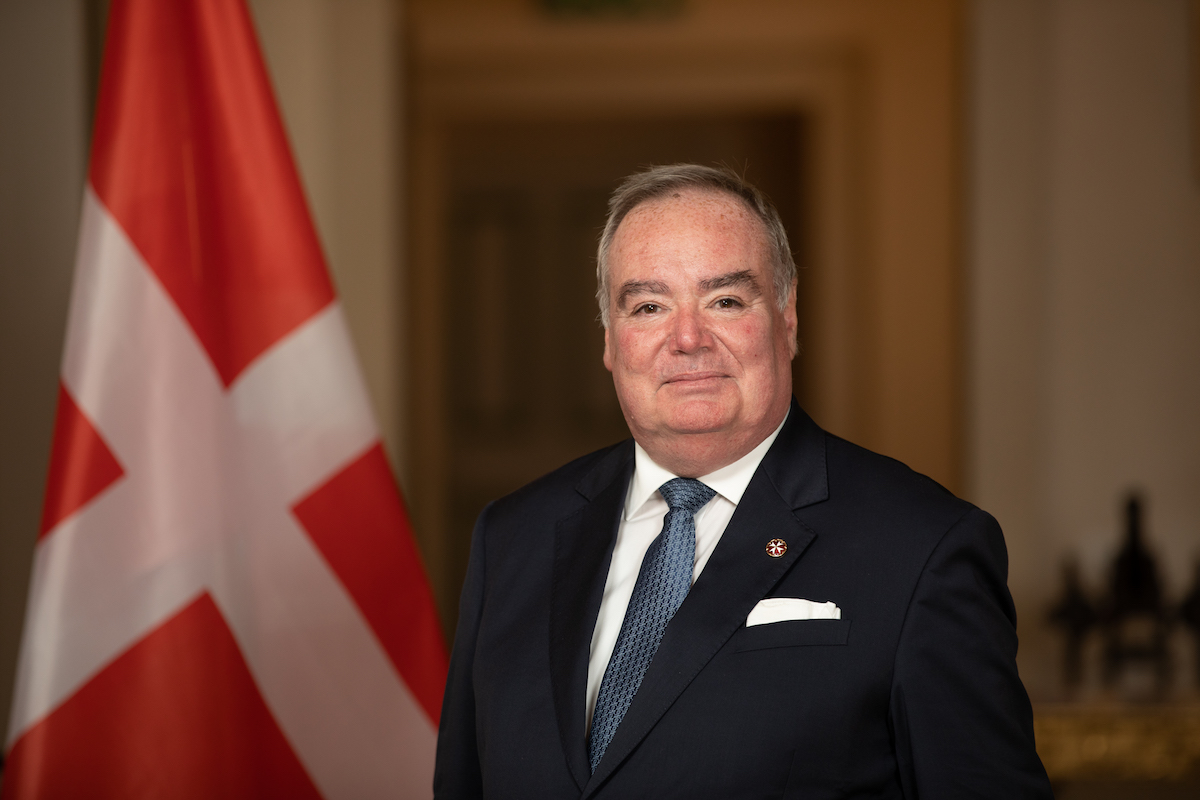The Sovereign Order of Malta is one of the oldest institutions of Western and Christian civilisation. A lay religious order of the Catholic Church since 1113 and a subject of international law, the Sovereign Order of Malta has diplomatic relations with over 100 states and the European Union, as well as permanent observer status at the United Nations. The Order is neutral, impartial, and apolitical.
The full name of the Order is the ‘Sovereign Military Hospitaller Order of St John of Jerusalem, of Rhodes and of Malta’. However, abbreviations of the name – Sovereign Military Order of Malta, Sovereign Order of Malta, or Order of Malta – are often used for practical, legal, diplomatic, or communication purposes. The knights were initially called the Knights Hospitaller (or Hospitallers), describing their mission caring for sick, poor, or injured pilgrims to the Holy Land. But they were also called the Knights of St John because of the Order’s patron saint, St John the Baptist, and of Jerusalem because of their presence in the Holy Land, as well as the islands of Rhodes and Malta in later years.
These days, the Order of Malta controls no physical territory, other than two extraterritorial buildings in Rome: The Palazzo Malta in Via dei Condotti 68, where the Grand Master resides, and the Villa del Priorato di Malta on the Aventine Hill, which hosts the Grand Priory.
Despite the lack of land, the Order remains a sovereign entity. As such, the Order issues car license plates, currency (the Scudo), stamps, and passports – albeit the latter is only for members of the Sovereign Council and leaders of the Order’s diplomatic missions. The government of the Sovereign Order of Malta has a similar structure to state governments. However, it also includes specific features associated with its nature as a religious lay order, as well as particular terminology evolved from nine centuries of history. The head of the Order is the Grand Master who governs both as sovereign and as religious superior, and is assisted by the Sovereign Council, which he chairs. The Sovereign Council is elected for a six-year term, and is made up of the Grand Commander (Responsible of religious and spiritual matters); Grand Chancellor (Prime Minister, Minister for Foreign Affairs and Minister of the Interior); Grand Hospitaller (Minister for Health and International Cooperation); Receiver of the Common Treasure (Minister for Finance); together with nine other members. The life and activities of the Order are governed by its Constitution and its Code – where the latest revision was promulgated on 03 September 2022.
Today, the Order operates through 11 Priories, 48 national Associations, one worldwide relief agency (Malteser International), and 33 Volunteer Corps, as well as numerous hospitals, medical centres, day-care centres, and specialist foundations.
The Order is active in some 120 countries, caring for people in need through its medical, social, and humanitarian works. Day-to-day, the broad spectrum of social projects provides a constant support for forgotten or excluded members of society. The Order is especially involved in helping people living in the midst of armed conflicts and natural disasters by providing medical assistance, caring for refugees, as well as distributing medicines and basic necessities to people in need.
The Order of Malta is made up of more than 13,500 Knights, Dames, and Chaplains. Next to them stand 95,000 permanent volunteers and 52,000 employees – most of them medical personnel. While members of the Order of Malta often traditionally belonged to the European aristocracy, the emphasis today is on a nobility of spirit and conduct. Nobility in this deeper sense means carrying more responsibility or duties than others. The Order’s commitment is realised in social responsibility, loyalty to the Catholic faith and Church, readiness to uphold Christian tradition and in reaching out to people in need. Today, the majority of its members no longer come from ancient noble families, and are admitted because of manifest merits acquired thanks to the commitment in the Order’s works
The Order is funded by its members, as well as private and public donations, and vary according to different countries, types of projects, and respective situations. Resources for hospitals and medical activities usually come from agreements stipulated with the national health and social systems. The same is true for emergency services. In developing countries, activities are often backed by grants from governments, the European Commission, the UN specialised agencies and/or other international organisations. Funds also come from donations or benefactors’ contributions to the Order of Malta’s activities.
The Sovereign Order of Malta’s mission is summed up in its motto “Tuitio Fidei et Obsequium Pauperum”: nurturing, witnessing and protecting the faith (tuitio fidei), and serving the poor and the sick (obsequium pauperum).
For answers to more Frequently Asked Questions about the Order please visit:
https://www.orderofmalta.int/about-the-order-of-malta/faq
For details on the three official entities of the Order of Malta in Romania please visit:
https://www.orderofmalta.int/contacts/europe/romania
Written by James Michael Wilson – International Organization for Migration
www.twitter.com/James_M_Wilson





